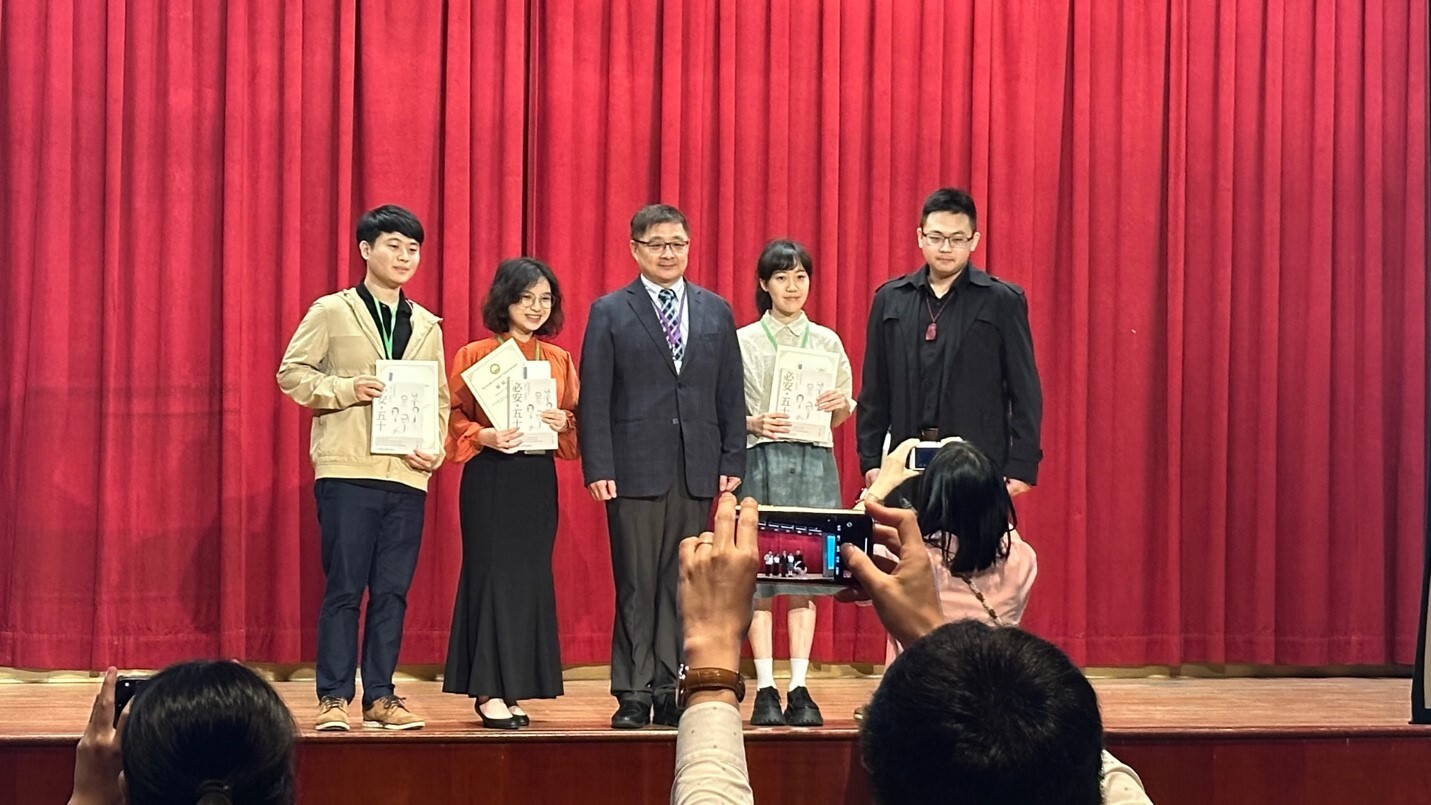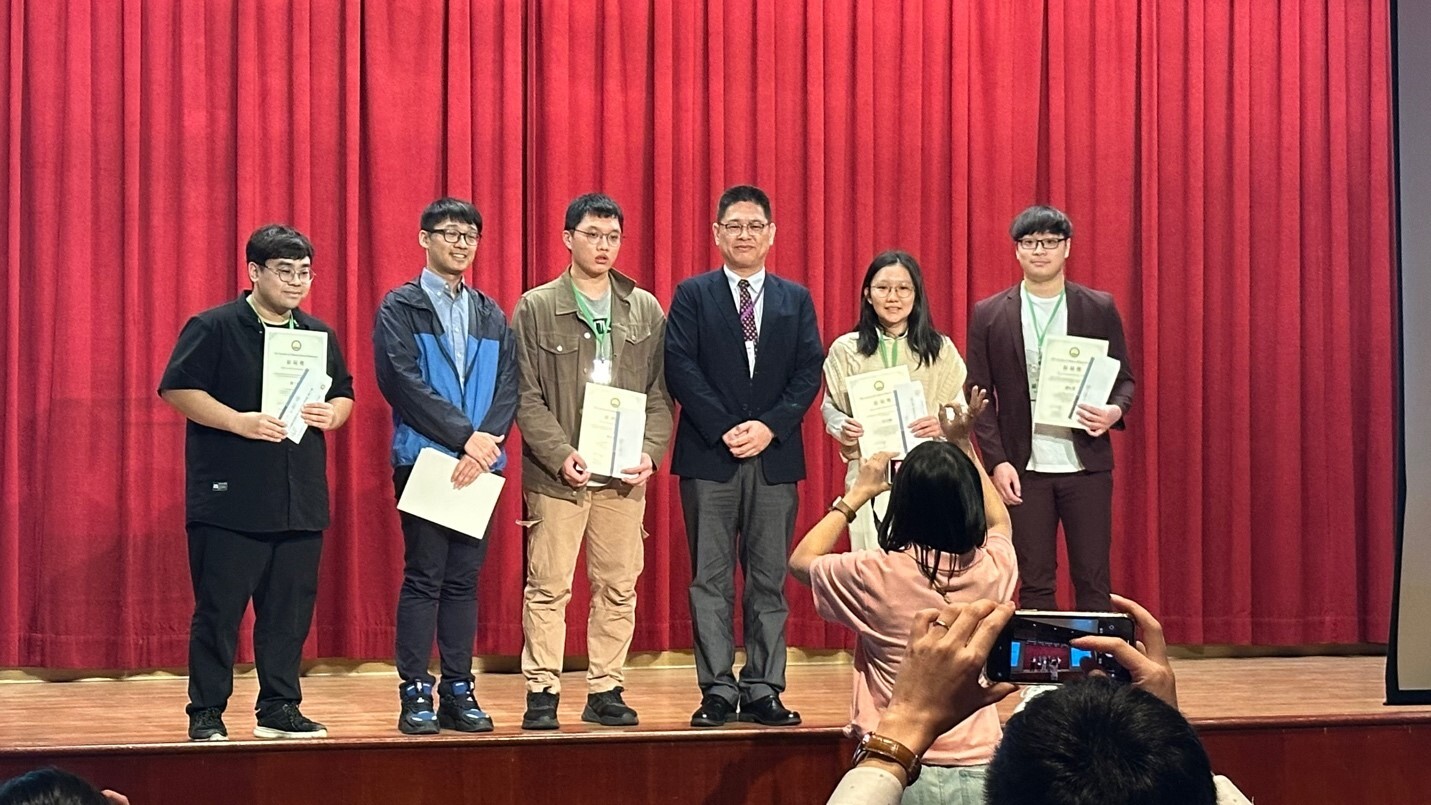【賀】本系博士班洪茂軒同學、何汶娣助理獲2023 天然藥物研討會天然物組壁報論文薪萌獎第三名與佳作
主題:台灣馬尾藻屬多醣研究
Vitroprocine A與其衍生物之全合成與活性研究
指導教授:廖志中
本系研究生洪茂軒博士班同學、何汶娣碩士級助理以「台灣馬尾藻屬多醣研究」與「Vitroprocine A與其衍生物之全合成與活性研究」等研究主題參加輔仁大學舉辦之第三十八屆天然藥物研討會壁報論文競賽,分別榮獲第三名與佳作等獎項。
在台灣馬尾藻屬多醣研究中,洪同學從台灣沿海與澎湖海域採集了四種馬尾藻進行硫化多糖的分析。在初步研究結果中,含有高硫酸化多糖的萃取物具有的抗血管生成作用,而含有低分子量、低硫酸化多糖的萃取物則具有免疫調節活性。此外,含有較高比例的葡萄糖單元多醣,甚至可以提高TNF-a和IL-6的含量。因此,我們認為較低的分子量和較低的硫酸化多醣可能會促進發炎反應。較高硫酸化多糖可能會增加抗血管新生作用。目前已完成了這些多醣的單元組成和連接型態分析,而這些多醣生物活性也正在研究中。
Vitroprocine A 是一種從海洋細菌中分離出來的抗菌天然產物,其生物合成已被闡明。但由於自天然萃取的產物量太低使我們無法進行進一步研究。在何小姐的研究中,她設計了全合成途徑,最終得到了兩種vitroprocine A的衍生物並進行抗菌活性測試。結果表明,這兩種化合物對這些病原體均具有抑制作用。但將合成之兩種化合物與天然化合物的核磁共振譜進行比較後,觀察到細微的差異,使我們懷疑雙鍵位置構象是否正確。爾後,她進行反式異構物合成,對vitroprocine類化合物將有更深入的了解。
Mr. Mao-Xuan Hung (Ph.D. candidate) and Miss Wendy Ho (Research Assistant) won the Third Place and the Honorable Mention Award, respectively, by the topics of “The Study on the Polysaccharides from Sargassum spp. in Taiwan” and “Total Synthesis and Bioactivities of Vitroprocine A and Its Derivatives” in the 38th Symposium on Natural Products held in Fu-Jen Catholic University on Oct 27-29, 2023.
In Mr. Hung’s study, he collected four Sargassum spp. in Taiwan. The preliminary study indicated that some extracts with polysaccharides contain higher sulfate showed a clear anti-angiogenesis effect while the extracts with lower molecular weight and fewer sulfate polysaccharides had immunomodulatory activity. Moreover, the polysaccharides contained a higher percentage of glucose even could enhance TNF-a and IL-6. Thus, Hung thought that lower molecular weight and fewer sulfates might promote the inflammatory response. Higher sulfates might increase the anti-angiogenesis effect. These polysaccharides have been identified their composition and linkage types. The further bioactivities of these polysaccharides are under investigation.
Vitroprocine A was an antimicrobial natural product separated from marine bacteria and its biosynthesis has been elucidated. However, the yield of the product was too low to do further study. In Miss Ho’s study, she designed the total synthesis pathway and finally got two vitroprocine A derivatives to do the antimicrobial test. The results showed that the two compounds have an inhibitory effect towards these pathogens. But when she compared the NMR spectra of these synthesized compounds with that of the natural one, she noticed little difference. Thus, she suspected that the conformation of the double bond might be different. So, she did the trans-form synthesis and gained much deeper understanding of the vitroprocine family.















